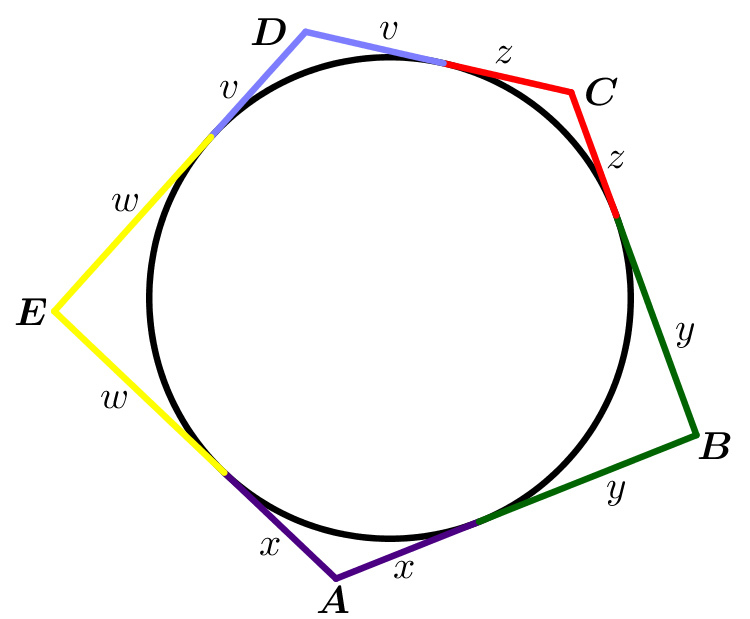Pentagon and a circle
We've inscribed a circle into a pentagon, as shown in the diagram.
Is it possible that the side lengths of the pentagon are in some order?
This section requires Javascript.
You are seeing this because something didn't load right. We suggest you, (a) try
refreshing the page, (b) enabling javascript if it is disabled on your browser and,
finally, (c)
loading the
non-javascript version of this page
. We're sorry about the hassle.
Suppose yes. Then we can use the figure below.
x + y + z + v + w = 2 ( x + y ) + ( y + z ) + ( z + v ) + ( v + w ) + ( w + x ) = 2 1 + 2 + 3 + 4 + 6 = 8 Let's assume, that the A B side's length is 6 . Then ( x + y ) = 6 , so z + v + w = 8 − 6 = 2 . From that both of the C D = z + v and the D E = v + w side's lenght is smaller, than 2 , but from the 1 , 2 , 3 , 4 , 6 numbers, only one is smaller then 2 , which is a contradiction.
So the answer is: not possible.